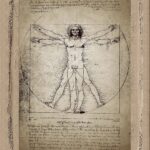Electro-acupuncture
 Electro-acupuncture is a modern form of research, where the responses of the body are attached to a number.
Electro-acupuncture is a modern form of research, where the responses of the body are attached to a number.
Diagnosis by Electro-acupuncture was developed in 1953 by:
Dr. Reinhold Voll.
As a general practitioner and acupuncturist, he developed a method to make Traditional Chinese Medicine more easily accessible, through an amalgamation of traditional Chinese acupuncture and Western technology.
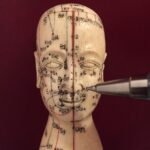 Traditional acupuncture is based on the assumption that health is a balance of energy in the organs, where each body unit produces energy.
Traditional acupuncture is based on the assumption that health is a balance of energy in the organs, where each body unit produces energy.
Voll developed a method to measure the energy (the electrical activity of the organs) on acupuncture points through the use of a machine. He then fixed a number corresponding to energy production in the body.
Electro-acupuncture according to Voll (EAV)
EAV is a diagnostic method that can also be used as a way to measure the effectiveness of medication on the patient, as acupuncture points react directly (through changes in energy) to each form of treatment (stimulus).
In the Practice-Progressive-Medicine, Britta Jansen used Voll-Electro-acupunture since 1991.
At the moment, Britta Jansen uses Prognos for the Electro-acupuncture measurements
Orthomolecular Therapy
Ortho = well Molecular = material
The medicine of “good” materials.
We can have a temporary need for certain vitamins, minerals, and trace elements for many reasons.
When these substances are not sufficiently present in our diet or are not absorbed by the body, shortages can arise and impairment to our metabolism can result.
Normal dietary intake often fails to provide the minimum required quantity of essential nutrients necessary to remain healthy ( see “shortages in the Dutch diet”, Foundation for Orthomolecular Education.)
Individual needs can differ as a result of:
– Hereditary factors
– Lifestyle choices
– Environment
 – Pesticides
– Pesticides
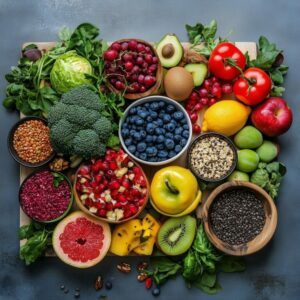 – Nutritional shortages in soil, which result in shortages in our diet
– Nutritional shortages in soil, which result in shortages in our diet
– Industrial food production
– Air pollution
– Radiation
– Illness
– Stress
– Insufficient food absorption
– Bad bowel function
– Exposure to harmful substances (for example, teeth fillings composed of mercury).
There have been innumerable medical publications released worldwide, concerning the importance of plant-based medicines, vitamins, 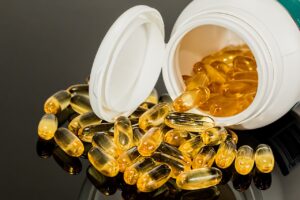 dietary supplements, and the modern diet, all of which conform to the stringent requirements of modern science.
dietary supplements, and the modern diet, all of which conform to the stringent requirements of modern science.
Orthomolecular therapy repairs the functions of metabolic processes through supplementation of the lacking substances, overcoming any nutritional shortages adversely affecting the metabolism.
The treatments prescribed under orthomolecular therapy are based on the results of scientific  study published in recent and widely-recognized medical journals.
study published in recent and widely-recognized medical journals.
Preventative orthomolecular therapy can contribute to a life of good health.
In the Practice Progressive-Medicine, Britta Jansen applies orthomolecular medicine in an optimal way.
At the right time with the right means, in conjunction with other treatments and dietary recommendations, orthomolecular treatment can result in a faster, more effective response on the body.
What is homeopathy?
Homeo = similar
Pathos = suffering, illness
Homeopathy is a way of treating the body, in which the body is repaired through achieving a balance through use of ‘equal with equal’ inside the body. Homeopathy is a substance, which  is able to provoce certain bodily symptoms , and, as a medicine, it is also able to treat these symptoms.
is able to provoce certain bodily symptoms , and, as a medicine, it is also able to treat these symptoms.
Briefly: Silia Similibus Curentor
(Equal is healed with equal)
Coffee can cause insomnia (if ingested heavily, or with people with sensitivities to the substance)
As a homeopathic remedy (coffea), coffee can aid in the treatment of insomnia.
Dr. Samuel Hahnemann
Homeopathy was discovered in 1790 when Hahnemann ingested a small amount of quinine bark (the raw form of quinine). Though he was a 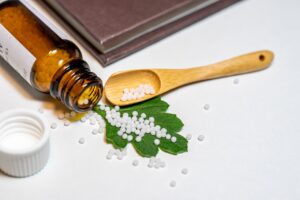 healthy person, he suffered all the symptoms of malaria, even though quinine is the medicine used to treat malaria worldwide.
healthy person, he suffered all the symptoms of malaria, even though quinine is the medicine used to treat malaria worldwide.
Over the remainder of his life, he examined 80 medicines.
We now know that there are a couple of thousand of medicines with these properties, and the research still continues.
Homeopathy is based on a number of principles:
– Similarities
– Use of ‘potentization’
– Treatment of the whole person
– Experiments on healthy people
Homeopathic substances are prepared from the extracts of mineral, plant, and animal sources.
When the pure form of these homeopathic substances (oertinctuur) is administered, the resulting symptoms look like those of the illness that is to be treated. This is the similarity of  symptoms.
symptoms.
The raw material is diluted and shaken (‘potentization’), and the potentials indicate the increasing degree of dilutions of the homeopathic substances in their pure forms.
d potentials, 1 on 10
D1= 1 parts of the pure extract to 9 parts of alcohol
D2= 1 parts D1 to 9 parts of alcohol, etc
C or k potentials, 1 to 100
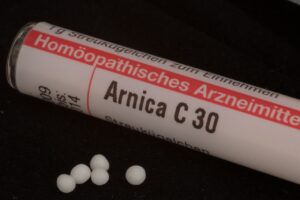 1 part of pure extract to 99 parts of alcohol
1 part of pure extract to 99 parts of alcohol
1 part C1 to 99 parts of alcohol, etc
These potentials tend to work the quickest.
LM or Q potentials, 1 to 50,000
L= 50
M = 1000
These potentials function gradually.
With increased dilutions, there is less of the original substance present. When the correct  remedy is administered, the substance behaves as a catalyst for its own defense system.
remedy is administered, the substance behaves as a catalyst for its own defense system.
In Practice Progressive-Medicine, clinical homeopathy is applied by Britta Jansen, when advisable.
These (complex) substances are designed to reflect the unique nature of the organs and tissues, and the effects of the substance on the body are first calculated by Prognos.
In certain cases, therapy is necessary for the detoxification of the liver, kidneys, lymphatic system, etc. Through the careful combination of orthomolecular medication and homeopathy, the detoxification response in the body can be initiated.
Laboratory
In Practice Progressive-Medicine, Britta Jansen works with:
MG Laboratories
MG stands for microbiology and gene technology. MG Labs utilizes cell research, cultures, and genetic techniques in their immunological 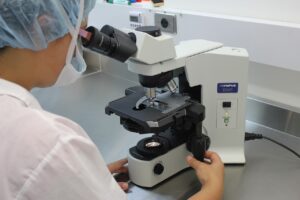 tests.
tests.
OVERVIEW OF ANALYSIS OF FECES
– Cytological investigation
– pH (acidity), digestion, starch, fat, and fibers investigation
– Bacterial cultures and DNA analysis
– Aerobic flora cultures (E-coli), and determination of relationships between them
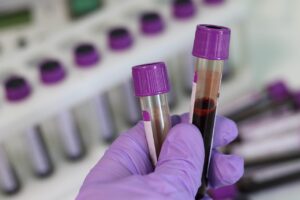 – Anaerobic bacteria types through DNA identification
– Anaerobic bacteria types through DNA identification
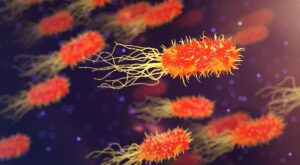 – Analysis of pathogenic bacteria such as Campylobacteria
– Analysis of pathogenic bacteria such as Campylobacteria
– Identification of salmonella, klebiella, proteus
– Cultures of yeast, funguses, Candida + nystatine sensitivity
– Immunological tests on sIgA (to identify chronic 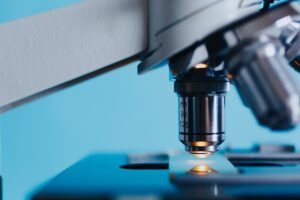 infections, gluten intolerances)
infections, gluten intolerances)
– Identifying Occult blood (infections) and antibodies against gluten
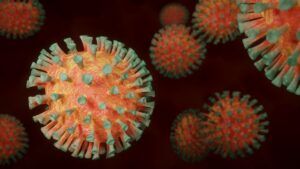 – Helicobacter pylori (stomach), giardia lamblia, and cryptosporidium (intestinal parasites)
– Helicobacter pylori (stomach), giardia lamblia, and cryptosporidium (intestinal parasites)
– Precursors: calprotectin, lactoferrine, TNF-a, B-defensive, MR-pyruvate, kinase, M2PK
– Alfa-1-trypsine (Loss of proteins, damage to intestines)
– Anti-t- transglutaminase and anti-gliadine (gluten)
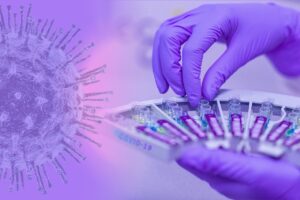 TFT test: triple feces test for parasites.
TFT test: triple feces test for parasites.
Pro Health Laboratory Incorporated
IMU PRO 300
Imu Pro shows the presence of IgC antibodies present in the blood serum. Raised concentrations of IgC antibodies present in the blood indicate that the small intestine has 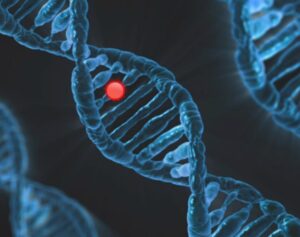 insufficiencies (leaky gut syndrome).
insufficiencies (leaky gut syndrome).
Macromolecular food particles that push through the lining of the bowels are recognized by the immune system as foreign entities, and specific IgC antibodies are formed in response.
When high concentrations of IgG antibodies are present, it is evident that there has been regular contact between the food particles and the immune system, which has resulted in an immune response that is initiated when the body perceives an infection.
These processes are ongoing, and can be the cause of chronic bodily complaints. ImuPro 300’s research of the blood charts articles of food that result in that immune response in the body. With that information, the dietary intake can be adjusted.
LIME:
Pro Health Medical Laboratory works together with several international laboratoria for a reliable diagnosis on the Borrelia bacterie.
– SeraSpot® . A sensitive Lyme test. The test can be done relatively soon after a tick bite.
– MELISA LTT. De LTT Lyme test is one of the most reliable Lyme test at the moment and a very good next step once the serologic test (ELISA/Blot) is negative.
De Melisa LTT is international validated, 14 studies where published on Melisa LTT with Borrelia infections.
This test can be used after an earlier negative outcome or for testing after the treatment on Lime.
The test is also useful after a longer period of Lime symptoms.
The Melisa Borrelia test is available in Germany at certified partner laboratories.
Keac
Clinical Ecological Allergy Center
Keac shows the presence of HPU through the means of urine testing.
With HPU (hemopyrrolactamurie), the HPL-complex (hemopyrrolactam-complex) is released with the urine. Hemopyrrolactam-complex binds to vitamin B6, manganese, and zinc and releases them from the body.
The shortages that arise due to presence of HPU disturb biochemical processes that are dependent on these vitamins and minerals.
This can be the cause of many complaints in the body, including muscle and joint complaints, hormonal issues, hypoglycemia, stomach and intestine complaints, fatigue, headaches, etc.
Glycobiology –
Essential sugars
 Our body is comprised of:
Our body is comprised of:
Molecules,
molecules form Cells,
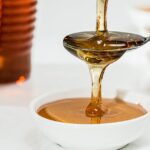 cells form Tissues,
cells form Tissues,
 and tissues form Organs
and tissues form Organs
60 trillion cells
For Repair – Protection – Regulation of our physiology /metabolism
Every day there are 150 to 500 billion new cells made.
All these cells must be nurtured
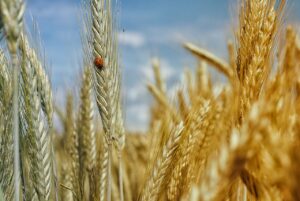 and directed.
and directed.
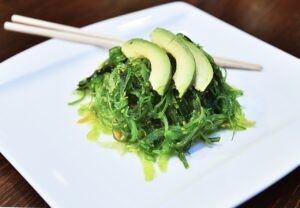 In 2010, the CRN (Council for
In 2010, the CRN (Council for
Responsible Nutrition) outline 3 pillars
necessary for our health:
1) Health food = Food choice (rich in nutrients)
2) Necessary supplements (our food does not have enough nutrients)
3) Regular physical exercise (varies with age)
Nutrients
Food is comprised of Carbohydrates, Proteins, Fats.
These contain Nutrients:
26 Vitamins
Enzymes
20 Amino acids
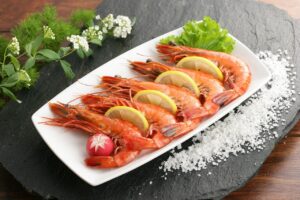 Fatty acids
Fatty acids
72 Minerals &
Trace elements
Phytosterols
Glyconutrients
(Glyconutrients have been studied since 1975
Sugar, Glucose, Monosaccharide
Glucose = sugar (monosaccharide, 6 carbon atoms) is best known sugar.
Sugar (glucose) is necessary for calorie requirements, fuel for cells and production of energy.
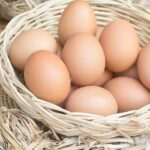 We have to have between 4.8 and 6.2 mm/L in our blood.
We have to have between 4.8 and 6.2 mm/L in our blood.
Too much is harmful for our health.
Sources of glucose:
– Sugar
– Carbohydrates
– Fructose (fruit)
Glyconutrients – Essential sugars
There are 200 sugars (monosaccharaides) in nature of which 9 are essential (indispensable) in our metabolism.
We get 2 sugars in sufficient amounts:
Glucose (sugar)
Galactose (sugars from milk)
The other “essential sugars” are:
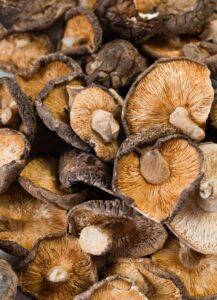 Fucose
Fucose
Mannose
Xylose
N-Acetyl-glucosamine
N-Acetyl-neuraminic acid
 N-Acetyl-galactosamine
N-Acetyl-galactosamine
 Arabinose
Arabinose
They are “sugars” that have another
function in our metabolism and play no role in the blood sugar.
What glyconutrients do
In 1975 science demonstrates that these “sugars” bind with proteins,
fats and other sugars: Glycosylation.
 They form Glycoforms, hairs of protein, where these “sugars”
They form Glycoforms, hairs of protein, where these “sugars”
are attached. These glycoforms are present
in every cell membrane (cell surface).
Every cell has a coating of these glycoforms, Glycocalyx
Glycocalyx, mantle of glyconutrients
The function of glycocalyx is Communication.
 You can compare the letters of the alphabet with the “sugars”
You can compare the letters of the alphabet with the “sugars”
in the coating of the cell wall.
4 icons together form letters – letter combinations form words –
words form sentences.
This is how we communicate with each other.
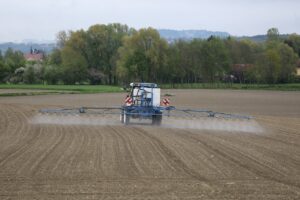 Combinations of these essential sugars, when clicked together,
Combinations of these essential sugars, when clicked together,
form intra-cellular Braille. Every “sugar” has a fixed place.
 Cells communicate this way with each other: they read each other’s coding (braille).
Cells communicate this way with each other: they read each other’s coding (braille).
They send and receive messages thousands of times per second, over and over.
Cell communication – Management – Regulation – Protection
Cell to cell communication is the base from which our metabolism is controlled.
A good cell communication is the base for management, regulation and protection
of our entire metabolism (biochemistry).
After all, there must first be an assignment given (communication)
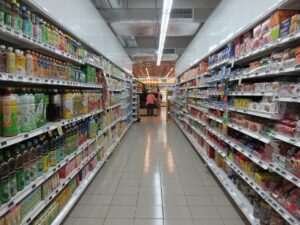 before a process (in the metabolism) can be executed.
before a process (in the metabolism) can be executed.
Thus, these glycoforms are able
to “read” everything they come in contact to and,
through the process of communication, respond.
Healthy cells
have specific combinations of sugars, are recognized by each other and left alone.
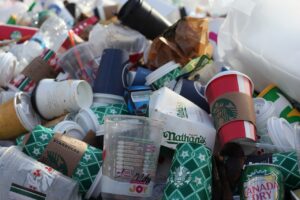 If recognition sites are not found on different combinations,
If recognition sites are not found on different combinations,
 they are “labeled” for excretion and thus destroyed. (e.g. bacteria or aberrant cells)
they are “labeled” for excretion and thus destroyed. (e.g. bacteria or aberrant cells)
Lack of “sugars” is the lack of pieces of “letters”.
The information transfer is then not optional
and this has consequences for the metabolism.
When 2 cells have an interaction, these sugars play a role.
Optimal cell communication results
in an optional transfer of information.
 Through this, our metabolism is able to repair and clean-up disturbed processes.
Through this, our metabolism is able to repair and clean-up disturbed processes.
Glycocalyx has a function in:
Cell communication, information exchange
Activation of physiology
Regulation of the immune system, immune modulator
Inhibition of adhesion of bacteria, viruses and parasites to the cell
Regeneration
 Clotting
Clotting
Tissue firmness
Support of digestion
Brain metabolism, memory, concentration, mood
Binding to other proteins, glycoconjugates, e.g. egg – sperm (fertilization)
Nerve conduction, neurotransmission
Wound healing, tissue repair
Hormone functioning
Detoxification
Sports Performance: endurance, better recovery after exercise, trauma.
The arrangement of the “sugars” determines what blood type we have.
Where are essential sugars
Glyconutrients are essential.
They have to be taken in through our diet.
They are in plants, fruits, vegetables, mushrooms, seaweeds and seeds.
Nowadays our diet is deficient in glyconutrients.
Of the 9 essential sugars,
only 2 are sufficiently found abundant in our diet:
Glucose (carbohydrates)
Galactose (sugars from milk)
The other “sugars”
Mannose, Fucose, Xylose,
N-Acetyl-glucosamine,
N-Acetyl-galactosamine,
N-Acetyl-neuraminic acid
and Arabinose,
are mostly insufficient in our diet.
Our diet is deficient in Nutrients
Large-scale agriculture,
Farming methods, Genetic engineering,
Multiple harvests per season,
Fertilizer, Pesticides,
Growing on high water content,
Contaminated soil, Loss of trace elements,
Contaminated groundwater/rainwater on fields,
Air pollution,
Transport, Packaging (plastic),
Conservation,
Immature harvest,
Processing,
Color/fragrances/aromas compounds.
Through these, our diet has become deficient in nutrients
and we are forced to make up for this shortage.
Essential sugars are
the building blocks from polysaccharides, glycoproteins and glycolipids.
As opposed to fatty acids and amino acids, these monosaccharide molecules
(essential sugars) are in linked to each other many ways.
There can, for example,
from 4 amino acids, 24 different combinations be made
and from 4 essential sugars, 35560 unique connections.
The large variety of shapes and numbers guarantees the recognition and transfer of information between all body cells.
Glycobiology is a young science that is being studied worldwide.
There are more than 20,000 studies carried out per year and there have been 4 Nobel Prizes given out on the topic of cell communication.
In the meantime, it has been found that glyconutrients can have a large influence
on the improvement of the sugar structures on the cell surface (glycocalyx) and in the restoration and preservation of our health.
For further information, you can contact Praktijk Progressieve-Geneeskunde (Practice Progressive Medicine).
Practice of Progressive-Medicine,
Britta Jansen
On this website you will learn about the diagnostic methods and treatments utilized by PPG.
In Energetic Medicine, Britta Jansen combines the knowledge of Acupuncture, Electro-Acupuncture, Prognos computer analysis, Traditional medicine, Homeopathy, Orthomolecular medicine, Bio-resonation therapy, Laboratory services, Dietary recommendations, Emotional therapy and Coaching, into an integrated system of treatment.
The treatment plan will contain many components.
Addressing the causes of physical complaints and repairing bodily functions.
Balancing of disrupted energy flows.
Seeking out the underlying issues behind a patient’s symptoms , including chronic ones.
Treating and integrating damaging and unaddressed emotions.
Coaching to achieve a desirable situation.
The treatment plan is designed on an individual basis, carefully matched to your age, your physical and emotional state, and your responsiveness to the treatment.
The duration of the treatment will depend on the individual and the nature of the complaints. Children will generally recover quickly due to their natural resilience.
Hereditary illnesses cannot be cured, but it is often possible to achieve a reduction in symptoms and to stabilize the progression of the illness.
All information given by you to PPG is protected by our strict professional code of confidentiality. If necessary, PPG will refer you to a regular doctor, psychologist, physiotherapist, etc.
